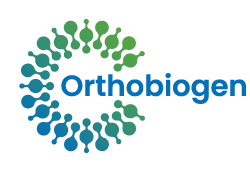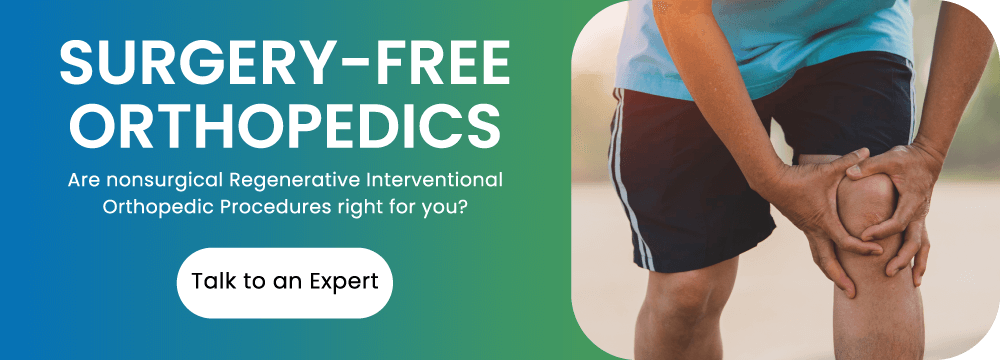Low back pain is a common symptom that many adults in the U.S. experience, particularly in Oklahoma. In fact, one study found that over a quarter of the population had experienced low back pain in the 90 days before answering a survey. Fortunately, many episodes of low back pain only last for a few months. However, many Oklahomans experience recurrent attacks and will need further care, such as when they have facet joint pain, facet arthritis, or facet arthropathy.
Introduction
People who have low back pain for more than three months may end up with many medical-related expenses and may not be able to work effectively. Even though we know more about how pain works and have better technology to see inside the spine, traditional healthcare continues to have challenges finding the exact cause of low back pain. Our Orthobiogen lower back pain specialists are experts at identifying the source of low back pain.
We have the expertise to get you the answers you are looking for to help get you the low back facet pain relief you need.
Facet Joints as a Source of Pain
Many parts of the spine may lead to pain. The facet joint was first described as a potential pain source as far back as 1911. The facet joint is now increasingly recognized as an important and widespread cause of low back pain.
The term “facet syndrome” has a long history and was first created in 1933 to describe chronic pain in the facet joints. A facet joint is a point where two of your back or spinal bones meet at the back of your spine. Studies have shown that facet joint disease is one of the most common causes of chronic lower back pain for up to 52% of patients with lower back pain.
Common Source of Lower Back Pain
The occurrence of facet joint arthropathy or facet arthritis is common in a wide range of age groups. Facet joint disease in deceased patients was examined in detailed anatomy studies.
It was found that 57% percent of people between 20 and 29 years of age had visible facet joint damage. In addition, 93% of people between 40 and 49 years of age and 100% of those over 60 years old had prominent facet joint arthritis. The most common spine level found to have this facet disease was at the lumbar L4 – L5 levels.
Facet Pain Diagnosis
Facet joint pain is diagnosed and treated with facet joint injections and radiofrequency lesioning of the medial branches. These are some of the most common procedures used to treat pain. There were over 175,000 Medicare billings for these procedures in 2001.
This article will give you a brief review of the essential factors to consider if you are concerned about diagnosing and treating facet joint pain, also referred to as facet arthropathy.
Facet Pain Background
Many adults experience back pain that is thought to be caused by degeneration of the discs between the vertebrae. Studies have shown that changes in the facet joints may come before the deterioration of the discs, or degenerative disc disease. The discs support most of the weight when people are bending forward, but as people bend their spine backward, the facet joints take on a greater load. sIn addition to stabilizing the spine and guiding motion between vertebrae, facet joints also bear weight as the discs do.
The Role of Facet Joints in the Spine
Medical research has shown that the facet joints support up to 33% of the weight load within the spine. When the disc space becomes narrower due to degeneration, it can cause increased pressure on the facet joint and surrounding joint tissue or capsule. The muscles play a significant role in vertebral stability.
Repetitive and continuous movements can decrease the reflexive muscle activity of the muscles around the spine, resulting in a less stable back. This could lead to more stress on the facet joint capsules.
Changes in how you use your body can lead to arthritis in your joints, referred to as osteoarthritis. It can cause you to have bone spurs, and it can also make the areas around your joints inflamed. This might make the pain you feel worse. Some people think that the inflammatory chemicals from the irritated facet joint capsule can spread to the nearby nerve roots and cause pain in the legs.
Challenges of Finding the Pain Source
When a person has low back pain, the first thing doctors try to figure out is what is causing it. This can be difficult because many things can cause low back pain. Sometimes people have a history of symptoms that suggest a specific cause for their pain, like a disease or tumor. But often, the cause of the pain is not clear.
Studies show that as many as 85% of people with low back pain do not find out what is causing their pain even after doctors do tests. For this reason, we recommend that you schedule a consultation with our lower back pain specialists. We are experts at identifying the source of your back pain.
Facet Joint Treatment
There are many studies on how to treat low back pain, but there is not much information on how to specifically treat pain from the facet joints. A comprehensive history and physical exam are always needed to figure out the best treatment plan. Initial imaging tests are not always necessary unless there is a strong suspicion of a specific cause or if there are “red flag” signs that may indicate a more severe problem.
If your pain is more significant and you seek the most advanced facet joint pain treatments, we recommend getting an image of your back. Most often, our specialist Regenerative Medicine doctors will obtain an MRI and/or CT scan to assist in planning your low back treatment.
Medications in Facet Pain Therapy
There are different types of pain medicine. The first type is referred to as simple analgesics. These include medications like acetaminophen and nonsteroidal anti-inflammatory drugs (NSAIDs).
Acetaminophen generally has fewer side effects than NSAIDs, such as heart, kidney, or stomach problems. But if you take it a lot, you could experience problems with the liver.
Some people use benzodiazepine and non-benzodiazepine skeletal muscle relaxants to help with pain in the back. However, there are many arguments about using controlled substances for chronic low back pain.
Some people use medications like gabapentin, a neuropathic pain blocker, to try and help with pain conditions such as neuropathy. Gabapentin has been studied for people with lumbar radiculopathy and lumbar spinal stenosis, and there may be some benefits. There haven’t been many studies on whether or not gabapentin is helpful for pain caused by facet joints.
There have been some studies on how antidepressants work for chronic low back pain, and they seem to help a bit. But there haven’t been any studies specifically on how well antidepressants work for people with pain from facet joints.
Many different drugs have been used to treat back pain, but there hasn’t been any research into whether or not they are effective in people with demonstrated facet joint pain.
Consider Treatment Alternatives to Medications
At Orthobiogen, we work to treat your lumbar facet joint pain without prescription medication, ideally. Our lower back specialists rely on more natural treatment options, such as using your own blood proteins, which can reduce side effects. Contact our office if you have been trying prescription medications and are experiencing significant side effects and limited relief. We look forward to the opportunity to provide you with a more natural treatment alternative.
Facet Injection Diagnostics and Treatment
If you have pain coming from your facet joints and two diagnostic blocks show that it is, you may want to consider having a radiofrequency denervation procedure. This is a process where the medial branches of the nerves near the facet joints are lesioned with electric and magnetic fields. If these nerves become numb from the procedure, they will no longer send pain signals from the facet joints.
Radiofrequency ablation is a procedure that is now commonly used to relieve pain caused by the facet joints. Radiofrequency denervation has been shown in some studies to provide significant pain reduction in patients with chronic low back pain for 6 to 12 months.
However, radiofrequency ablation is not without risk and does not provide the advantages of a Regenerative Medicine approach to your lower back facet joint pain. Our Oklahoma spine specialists are uniquely trained in the most advanced non-surgical treatment options for facet joint pain. Let us help you make the best treatment choice that fits your goals and lifestyle.
Facet joint blocks can be a valid, safe, and reliable diagnostic tool. Medial branch nerve ablation can also help control pain caused by the facet joints in chronic lower back pain. However, it would be best to consider all your facet pain treatment options, including Regenerative Medicine alternatives for facet joint arthropathy. Orthobiogen spine specialists have helped thousands of Oklahomans live more productive lives with less pain.
Schedule a Regenerative Facet Joint Evaluation
We look forward to helping you find the treatment that is the most minimally invasive and longest-lasting pain treatment option. Contact us for a comprehensive facet joint evaluation and get answers to your lower back pain.



